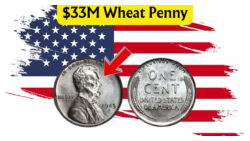Rare Dimes and Bicentennial Coins
Table of Contents
Exploring the Value of Rare Dimes and Bicentennial Coins
Rare dimes and bicentennial coins: For many in the world of numismatics, these coins hold not only historical significance but also potential financial value. Whether you’re a seasoned collector or a curious beginner, understanding the worth of these coins can open doors to unexpected opportunities. Rare coins, especially those minted with unique errors or in limited quantities, can be treasures hiding in plain sight. The journey to uncovering their value involves a mix of research, market insights, and a keen eye for detail, making it a fascinating endeavor for those passionate about coin collecting.
- Understand the history and significance of each coin.
- Research recent auction sales for similar coins.
- Consult with experts to verify authenticity.
- Consider the condition and rarity of your coins.
Identifying Valuable Dimes and Bicentennial Coins
- Look for unique mint marks or errors.
- Check for limited edition releases.
- Evaluate the metal composition of the coins.
- Assess the historical context of the coin’s release.
- Determine the coin’s demand among collectors.
The Market for Rare Dimes and Bicentennial Coins
The numismatic market is a dynamic landscape where the value of rare dimes and bicentennial coins can fluctuate based on factors such as market demand, historical significance, and the overall economic climate. Collectors often turn to prestigious auctions, online marketplaces, and specialized coin dealers to buy or sell these precious items. Understanding the nuances of this market can empower collectors to make informed decisions, whether they are looking to expand their collection or realize a return on their investment.
| Coin | Year | Mint Mark | Condition | Estimated Value | Recent Sale | Notes |
|---|---|---|---|---|---|---|
| 1916 Mercury Dime | 1916 | D | MS65 | $1,500 | $1,700 | Key date |
| 1955 Doubled Die Dime | 1955 | P | VF20 | $2,000 | $2,200 | Popular error |
| 1976 Bicentennial Quarter | 1976 | S | PR69 | $500 | $550 | Proof |
| 1964 Roosevelt Dime | 1964 | D | MS68 | $200 | $210 | High grade |
| 1975 No S Dime | 1975 | S | PF67 | $450 | $480 | Rare mint |
Spotting Potentially Valuable Coins
For the avid coin collector, spotting potentially valuable coins requires a mix of knowledge and intuition. Coins with unusual features, like rare mint marks or errors, often spark interest among collectors. Additionally, coins that were minted in small numbers or as part of a special edition can be particularly sought after. Paying attention to the details, such as the coin’s historical context and current market trends, is essential in assessing its potential worth. Furthermore, maintaining an updated inventory and regularly consulting with fellow collectors can provide valuable insights into emerging trends and opportunities.

Uncover the Hidden Fortune: Lincoln Wheat Penny Worth $3,877,500 Still in Circulation!
Steps to Evaluate Your Coin Collection
- Catalog your collection with detailed descriptions.
- Use a magnifying glass to inspect for mint marks or errors.
- Check online databases for recent sales data.
- Join numismatic forums to gain insights from other collectors.
| Step | Description | Tools Needed | Resources |
|---|---|---|---|
| Cataloging | Inventory all coins with detailed notes. | Notebook, pen | Coin Inventory Apps |
| Inspection | Examine coins for unique features. | Magnifying glass | Coin Collector Guides |
| Research | Check recent sales and market trends. | Computer or smartphone | Online Auction Sites |
Common Mistakes to Avoid in Coin Collecting
- Neglecting to verify the authenticity of coins.
- Ignoring market trends and collector demand.
- Failing to properly store and care for coins.
Understanding Coin Grading
In the world of numismatics, grading is a critical component that can significantly impact the value of a coin. This process, which assesses a coin’s condition, involves a detailed examination of factors such as wear, luster, and strike quality. Coins are typically graded on a scale from Poor to Mint State, with the latter being the most desirable. Grading can be subjective, and it often requires the expertise of professional grading services. Collectors are encouraged to familiarize themselves with grading standards to better understand their collection’s potential worth.
Common Grading Terms
- MS (Mint State): No signs of wear.
- AU (About Uncirculated): Slight wear on high points.
- XF (Extremely Fine): Light wear, high detail.
- VF (Very Fine): Moderate wear, some detail.
- G (Good): Heavy wear, major details visible.
The Role of Coin Dealers and Auctions
- Provide expertise and appraisals for rare coins.
- Offer platforms for buying and selling coins.
- Facilitate connections within the coin collecting community.
Preparing Your Coins for Sale
When preparing to sell your rare dimes and bicentennial coins, presentation is key. Properly cleaning and storing your coins can enhance their appeal to potential buyers. However, it’s crucial to avoid harsh cleaning methods that could damage the coins. Instead, use gentle methods to ensure your coins are displayed in the best possible condition. Moreover, presenting a thorough provenance and history of the coin can add significant value. Whether selling through an auction or a dealer, ensuring your coins are well-prepared can make a substantial difference in the final sale.

Could You Hold a Fortune? The Lincoln Wheat Penny Worth $33.3 Million Still Circulates!
Tips for Successful Coin Auctions
- Research the auction house’s reputation and past sales.
- Set a realistic reserve price for your coins.
- Provide high-quality images of your coins.
- Include detailed descriptions and provenance.
- Engage with potential buyers before the auction.
Final Thoughts on Coin Collecting
- Stay informed about market trends and new releases.
- Continuously educate yourself on numismatics.
- Network with fellow collectors for insights and opportunities.
Frequently Asked Questions About Rare Coins
What makes a dime or bicentennial coin rare?
Coins become rare due to factors like limited mintage, unique errors, or historical significance.
How can I find out the value of my coin collection?
Consult with professional appraisers or use online resources to compare recent sales and market data.
Are there risks involved in coin collecting?
Like any investment, coin collecting involves risks such as market volatility and authenticity issues.
What are the benefits of joining a coin collecting club?
Joining a club provides networking opportunities, access to expert advice, and shared resources for identifying and valuing coins.
How often should I update my coin collection inventory?
Regularly update your inventory to reflect new additions, recent sales, and current market values.
Disclaimer: This article is written for general informational purposes only. Please get the latest and accurate information from the official website.



